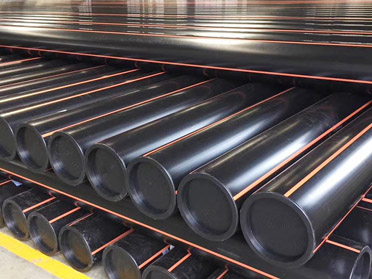How to Install HDPE Pipe?
HDPE pipe has excellent hydraulic properties because the material is smooth and less prone to scaling or pitting.
Plastics are now the material of choice for sewer, water and telecommunications applications. HDPE, a high-density plastic, is ideal for these applications because it is lightweight, corrosion resistant and resists bacteria and chemical buildup. Rubber hose has excellent hydraulic properties because the material is smooth and less prone to scaling or pitting.
HDPE operates over a wide temperature range and does not become brittle at low temperatures. It is both robust and flexible, with a failure rate of one in 10,000. It is ideal for underground installation in locations where soil movement (compaction/expansion) or earthquakes are known to create openings at joints. HDPE's high ductility and ability to resist ground movement deformation can withstand impacts, pressures, and movements that can disrupt rigid pipe.
HDPE Installation
In many cases, installing HDPE pipe is cheaper and easier than installing other materials. HDPE is much lighter than concrete, steel, and steel pipe, so it is less expensive to transport and does not require heavy lifting machinery. HDPE is often delivered in long coils, spools, or straight rods. Supplying HDPE on spools or coils can also reduce transportation costs because fewer deliveries are required.
HDPE installations require fewer fittings and accessories than other piping solutions, saving time and money during installation. Because HDPE is so flexible, it can be bent without the need for additional joints or fittings. This flexibility allows HDPE to be installed in the absence of trenches and uneven terrain. Joints are typically hot-fused and are as strong as the original pipe and will not leak. HDPE is also durable, with an expected life of 50 to 100 years, and is fully recyclable.

HDPE Gas Pipe
HDPE can be installed using standard methods such as pipe bursting, directional drilling, trenching and microtrenching.
Pipe bursting is a non-excavation method used as an alternative to burying underground water, water and gas lines without the need for traditional construction trenches and associated equipment. This method has become a practical solution for the replacement and rehabilitation of aging infrastructure. This less invasive method leaves the remnants of the old pipeline in place: no excavation, hauling or disposal is required. Other methods of removing or replacing old pipes can be three to five times more expensive.
When pipe bursting is not an option, HDPE pipe can be installed through horizontal directional drilling. While more invasive and disruptive to the ground than pipe bursting, horizontal directional drilling is far less invasive than trenching. Directional drilling also allows for the installation of larger diameter pipe, such as trunk and main lines, but requires specialized installation equipment. Drill assemblies need to be replaced each time the size of the borehole increases. While most soils and rock formations can be drilled horizontally, soils with high gravel and cobble content can cause problems.
Traditional trenching excavations are invasive and can lead to severe surface damage and disruption. Depending on pipe size and installation location, this method of installation can require heavy equipment and a large number of personnel. However, the flexibility of HDPE means that trench alignment does not have to be as precise.
For smaller HDPE pipe applications, such as data paths, micro-trenching is recommended. This installation method is an economical solution for reducing network construction, build and reinstallation costs. Microtrenching is minimally invasive and rarely damages or destroys existing infrastructure. An overview of the various trenching methods can be found on the Plastics Piping Institute website.
If you want to get more information about the HDPE pipe, welcome to contact us today or request a quote.